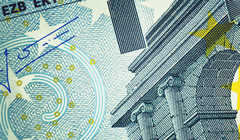 Despite resilience, the European corporate sector still faces significant risks and pressures that likely will deteriorate its credit quality, according to Standard & Poor’s (S&P).
Despite resilience, the European corporate sector still faces significant risks and pressures that likely will deteriorate its credit quality, according to Standard & Poor’s (S&P).
Over the last few years Europe has been rife with uncertainties, ranging from the Brexit and Greek-default threats to throngs of refugees crossing its borders. Nevertheless, Europe’s economies are continuing to strengthen, as are its financial markets. Investment-grade bond issuance has surged in recent weeks and the high-yield market is showing signs of revival. In addition, strong consumer credit growth points to the relative health of the European consumer sector.
However, says S&P in a recent report titled “Aversion Therapy: European Corporate Credit Outlook Q2 2016,” notwithstanding its ability to thrive amid uncertainty and a positive economic backdrop, European corporate risks remain. “Foremost among these concerns is the continuing weakness of corporate profitability and returns brought about by factors such as global overinvestment in industries linked to China’s massive industrial expansion over the past two decades,” the report says.
Given the potential for social upheaval and excessive amounts of corporate debt, S&P says China’s progress in shrinking its capacity in industries such as metals and mining, oil and gas, shipping, commodity chemicals and capital goods is likely to be slow. That could squeeze European multinational corporations’ (MNCs) profitability, as would the euro continuing to strengthen against the US dollor (USD).
In addition, the report notes, the European Central Bank’s monetary stimulus is unlikely to encourage corporates to increase their use of cash to make investments. “Disruptive pressures—new technology, cyber risk, regulation—are affecting many industries and create an incentive to preserve cash,” the report says. “Negative interest rates may start to alter this calculus, although such rates do not apply everywhere and firms will try and avoid these if possible.”
S&P also thinks global corporate capex is likely to fall by 4% this year and 2% next year. The ratings agency points to energy and materials investment as critical parts of the slump, although in Europe it expects to see capex increase modestly in other industries such as autos and industrials.
In the meantime, says S&P, European companies are likely to pursue M&A as an easier route to expansion, continuing the upsurge that began last year that has been fueled in part by inexpensive debt.
“In a world of exceptionally low interest rates and bond repurchases this is not necessarily a problem, but we are mindful of the return of leverage multiples to pre-crisis peaks,” the report says.
S&P says the relative financial stability today compared to a few years ago reflects in part the positive underlying reality of continued economic recovery in the U.S. and Europe, and an apparent steadying of commodity markets and the emerging market economies linked to them—at least for now. It notes the significant steps central bankers in China, Japan and European central banks have taken to reduce market volatility. Nevertheless, the agency retains concerns about the longer term build-up of debt in China and the broader issues of global overcapacity that are affecting many industries.
“Negative rates pose their own problems for the corporate sector and the financial system more widely,” the report says. However, “Provided that political strains (Greece, Southern Europe, Brexit) do not trigger a crisis of some kind we expect Europe to continue to remain relatively resilient against a still difficult global credit backdrop.”